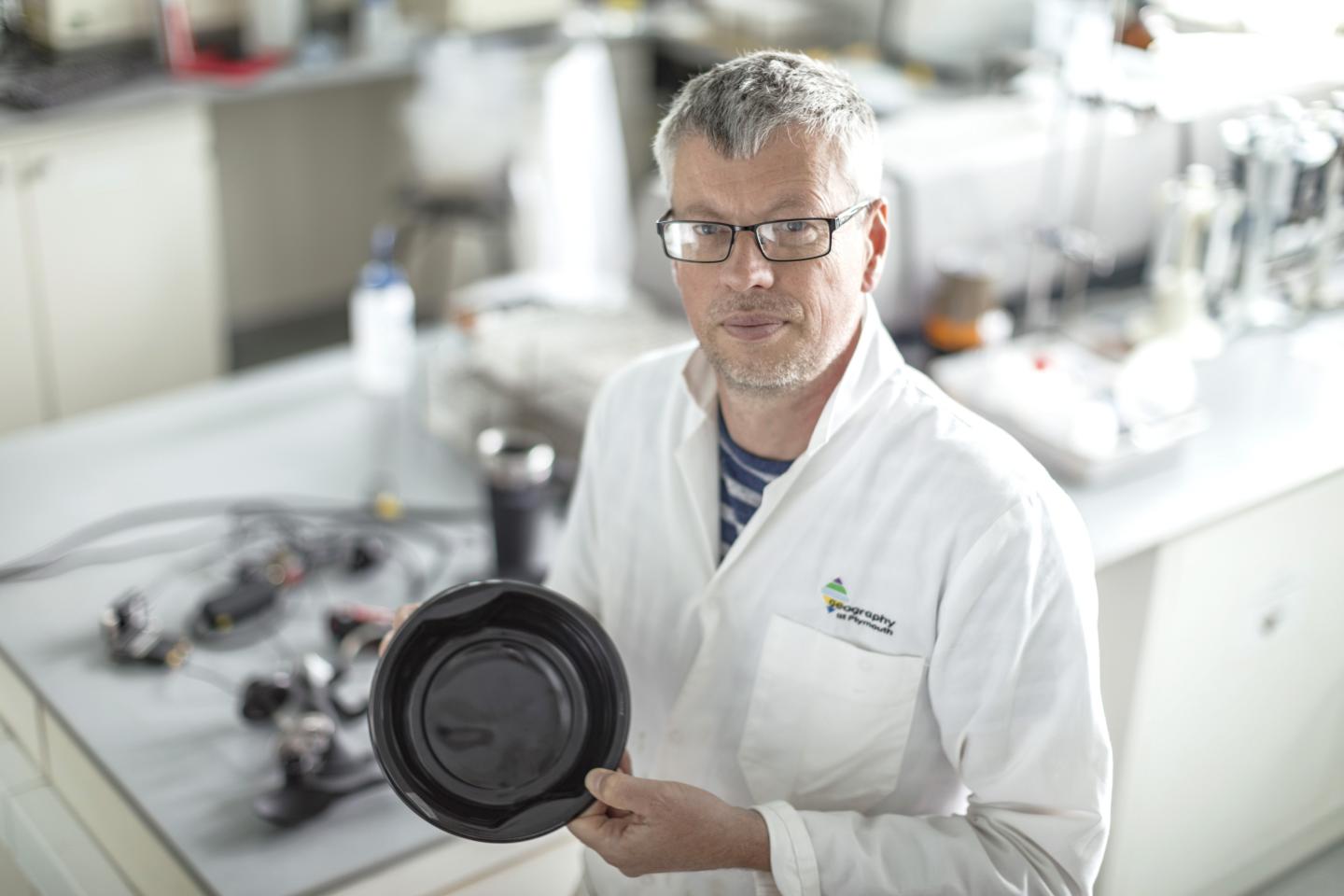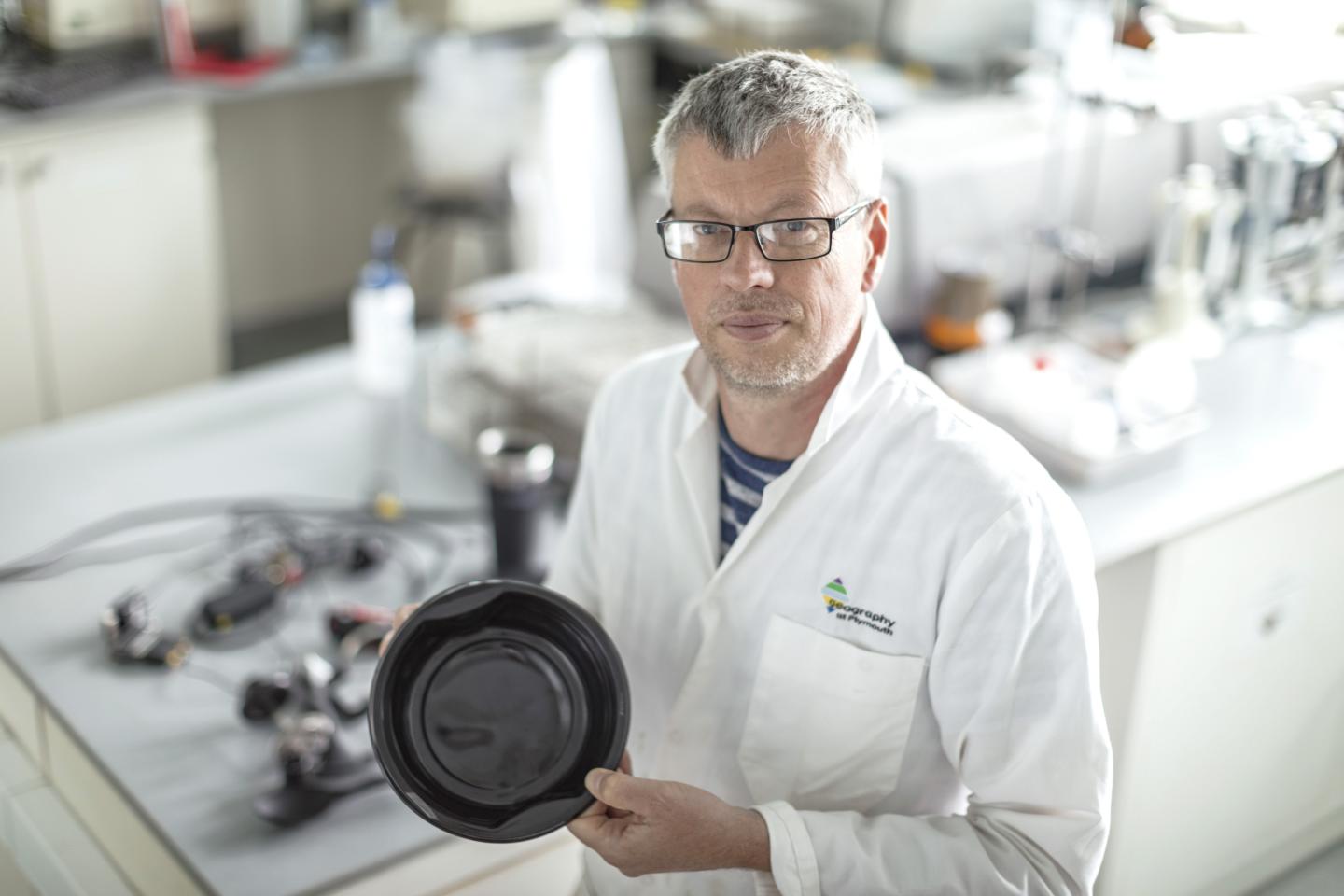
Credit: University of Plymouth
Hazardous chemicals such as bromine, antimony and lead are finding their way into food-contact items and other everyday products because manufacturers are using recycled electrical equipment as a source of black plastic, according to a new study.
The substances are among those applied to devices, such as laptops and music systems, as flame retardants and pigments but remain within the products when they reach the end of their useful lives.
Now scientists at the University of Plymouth have shown that a combination of the growing demand for black plastic and the inefficient sorting of end-of-life electrical equipment is causing contaminated material to be introduced into the recyclate.
This is in part because despite black plastics constituting about 15% of the domestic waste stream, this waste material is not readily recycled owing to the low sensitivity of black pigments to near infrared radiation used in conventional plastic sorting facilities.
The study is published in Environmental International and was conducted by Dr Andrew Turner, a Reader in Environmental Science at the University.
As well as posing a threat to human health, he says the study demonstrates there are potentially harmful effects for the marine and coastal environment either through the spread of the products as litter or as microplastics.
For this research, Dr Turner used XRF spectrometry to assess the levels of a range of elements in more than 600 black plastic products such as food-contact items, storage, clothing, toys, jewellery, office items and new and old electronic and electrical equipment.
Bromine, in the form of brominated compounds, is and has been used in electrical plastic housings as a flame retardant, while lead is often encountered in electronic plastics as a contaminant. However, both elements were found extensively in non-electrical black consumer products tested, where they are not needed or desirable.
In many products, including cocktail stirrers, coathangers, various items of plastic jewellery, garden hosing, Christmas decorations and tool handles, concentrations of bromine potentially exceeded legal limits that are designed for electrical items. In other products, including various toys, storage containers and office equipment, concentrations of lead exceeded its legal limit for electrical items.
Speaking about the current study, Dr Turner said: "There are environmental and health impacts arising from the production and use of plastics in general, but black plastics pose greater risks and hazards. This is due to the technical and economic constraints imposed on the efficient sorting and separation of black waste for recycling, coupled with the presence of harmful additives required for production or applications in the electronic and electrical equipment and food packaging sectors."
"Black plastic may be aesthetically pleasing, but this study confirms that the recycling of plastic from electronic waste is introducing harmful chemicals into consumer products. That is something the public would obviously not expect, or wish, to see and there has previously been very little research exploring this. In order to address this, further scientific research is needed. But there is also a need for increased innovation within the recycling industry to ensure harmful substances are eliminated from recycled waste and to increase the recycling of black plastic consumer products."
This research is the latest work by Dr Turner examining the presence of toxic substances within everyday products. He has previously conducted research which showed that decorated drinking glasses can contain harmful levels of lead and cadmium, that the plastic used in second hand toys often fails to meet international safety directives, and that playground paints should be more closely monitored to reduce potential danger to public health.
###
Media Contact
Alan Williams
[email protected]
44-175-258-8004
@PlymUni
http://www.plymouth.ac.uk
Original Source
https://www.plymouth.ac.uk/news/recycled-electrical-products-lead-to-hazardous-chemicals-appearing-in-everyday-items http://dx.doi.org/10.1016/j.envint.2018.04.036





